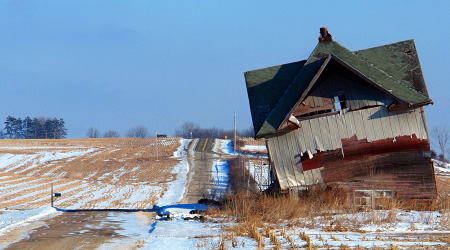Buying A Home That Needs Repairs

Finding the perfect house is sometimes easier said than done which is especially true if the house is pre-existing. Homes which are not new are bound to have various quirks and areas which need attention. Most, if not all, of these will be pointed out during a detailed home inspection. Some repairs may be easily fixable by the new home owner and others would be considered a no go at which point a perspective buyer should just walk away. The question is how do you determine which is which when buying a home that needs repairs.
Fixable Repairs
Generally speaking, any repair which doesn't require modification of the foundation or the structure is acceptable when buying a pre-existing home. This includes anything they can be made new again with simple cleaning with soap and water or touching up with paint. Exterior paint only lasts for about 10 to 15 years but is fairly inexpensive to have power washed in repainted by either yourself or a professional.
Flooring is a more labor-intensive process but for homeowners who don't mind a little elbow grease ripping up carpet or laying tile and hardwood flooring is definitely doable. Updating or replacing flooring is expensive however and should be factored into the purchase price of the home and used during negotiations.
Landscaping is also another area which can be used to significantly lower the price when making an offer. Whether working with a clean slate or landscaping already in place it can take significant time and effort to get it squared away. Installing a sprinkler system or laying sod is labor-intensive but again something which can be done by a new home owner if they are willing.
Walk Away Now
Structural deficiencies should never be tackled by a home buyer no matter how much they enjoy fixing up houses and applying sweat equity. Large cracks in the foundation can be a result of weakened concrete or poor grading and plot preparation. This can lead to a second set of issues regarding framing such as cracks in walls which cannot be repaired due to the foundation issues.
Electrical and plumbing issues are other areas which should be avoided when considering buying a home that needs repairs. This is because older aluminum wiring, which is no longer in use and has been superseded by copper with plastic sheeting, poses a potential fire hazard and would need to be ripped out of all walls. Older plumbing is also prone to excessive leaking and catastrophic failure which can damage personal property as well as structural integrity. If there are any issues whatsoever with either of these two areas then do not purchase the home.
The roof is an area which skews more towards the walk away recommendation but it depends on the circumstances. Some repairs such as re-shingling or fixing a hole caused by weather damage is considered maintenance and not an issue. More severe problems arise from homes with flat roofs since they are more prone to water damage resulting from pooling rain or accumulated snow that doesn't drain properly. If you're unsure about roof quality get a second opinion from a licensed roofer before purchasing a pre-existing home.
When In Doubt
Going with your gut, experience and common sense will be the best protection when buying a home that needs repairs. Combining your personal insights with a qualified and licensed home inspection should create a well-rounded picture of possible problems when purchasing a home. During the home inspection, ask plenty of questions and later get estimates on possible repair costs. Depending on what you're able to repair yourself and what you will have to contract out and what is ultimately unfixable will answer the question of whether or not to buy a home.







